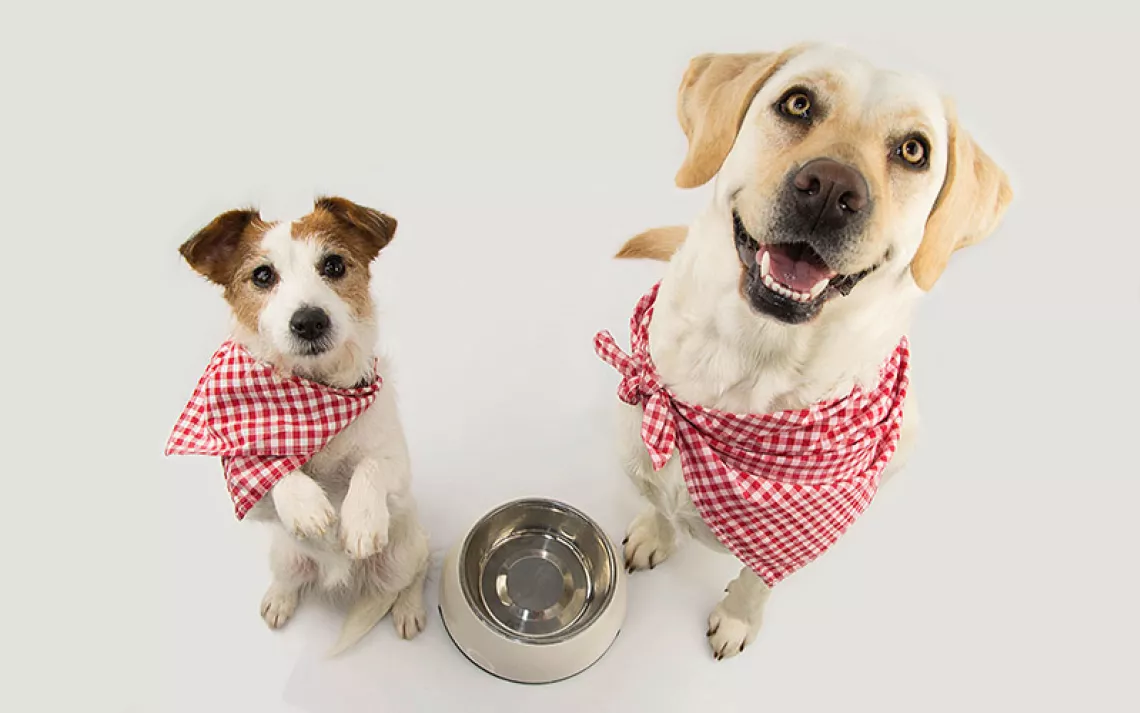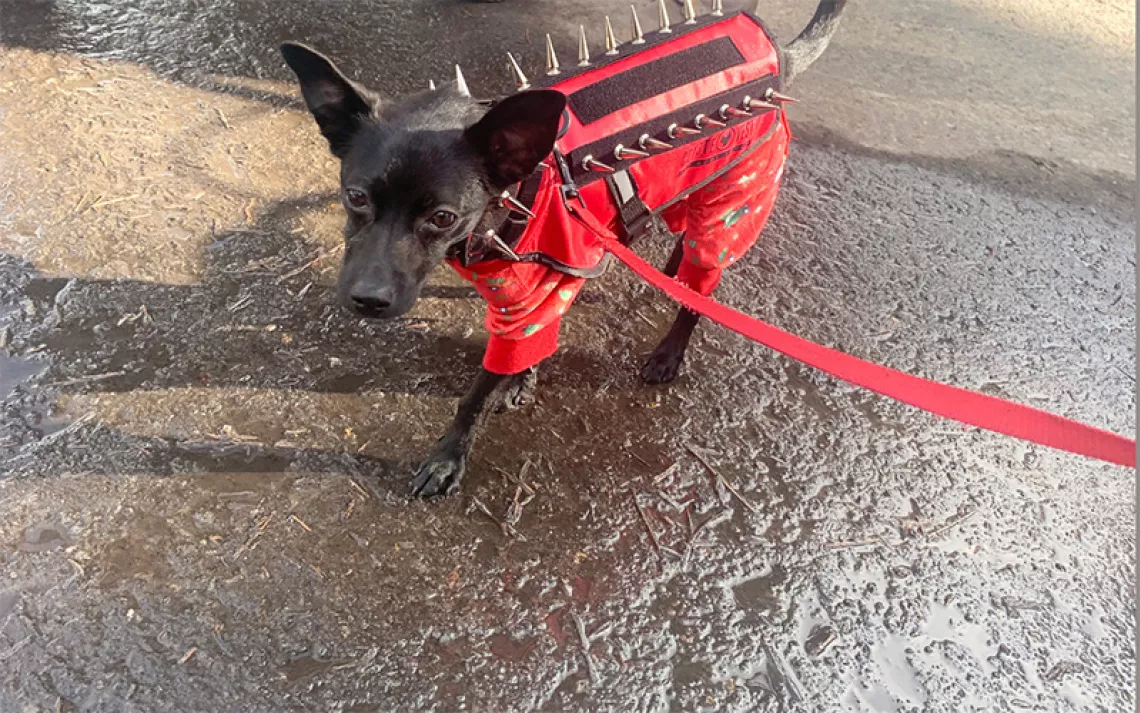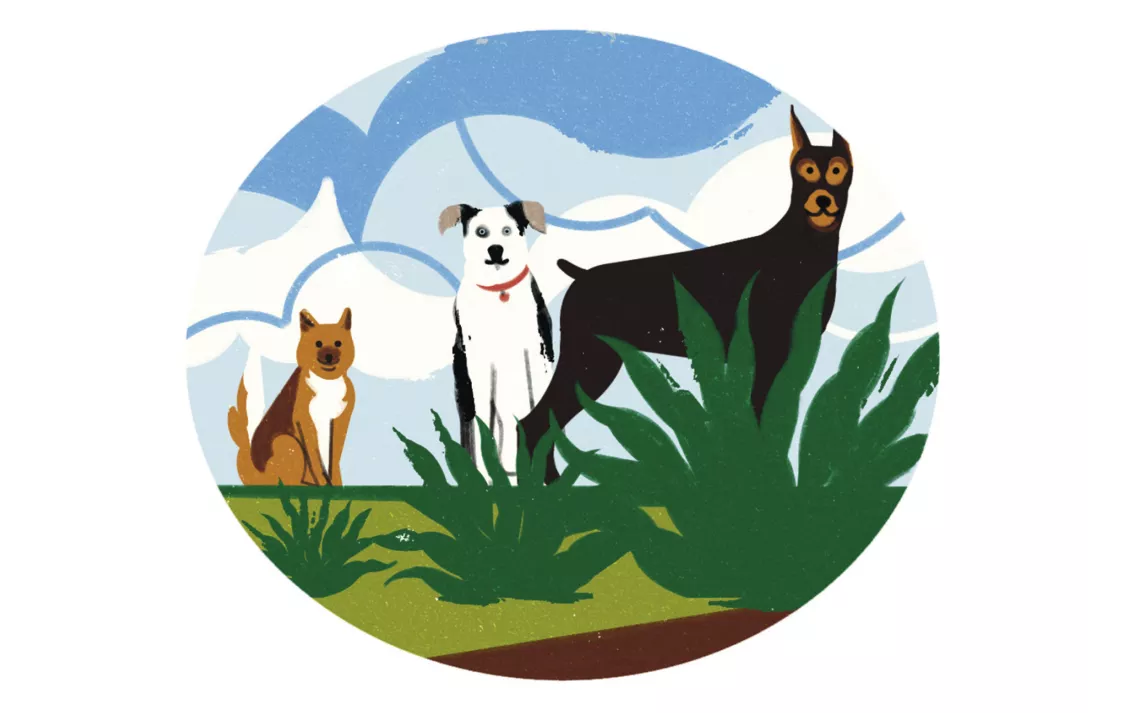Don’t Be a Shitty Dog Owner in the Great Outdoors
Pro tips—and etiquette—for hiking with your best canine

Photos courtesy of Steve Larese and his dog, Rico
The pandemic saw a boom in both dog adoptions and outdoor recreation. Data from 2020 shows increased pet supply sales and, according to the American Veterinary Medical Association, more veterinarian visits. Shelters across the nation reported 50 percent or higher rates of adoption after March 2020 compared with previous years, with some shelters even running out of available dogs. Meanwhile, use of outdoor apps such as AllTrails and onX Backcountry showed at least a 50 percent increase in usage after March 2020. Sales of outdoor equipment have also significantly increased according to industry trackers such as the NPS Group.
The takeaway? It all adds up to a substantial uptick in newfound dog owners hitting the trails and other public lands with their best friends. Here are just a few areas to consider before engaging in epic adventures with your four-legged hiking buddy.
Nutrition is key
Dogs can seem like super creatures who send it to 11 all day long as you limp along behind. But dogs metabolize food for energy, too, and can bonk just like us. Dogs need about a calorie per pound per mile when on the trail, says Dr. Jen Deming, DVM at Aspentree Animal Caring Center in Durango, Colorado.
“Multiday strenuous backpacking trips require more calories than what your dog normally consumes,” she says. “Depending on the fitness of the dog, two to four times their normal caloric intake will be required.”
So say you’re going on a 10-mile loop hike with your 35-pound Australian cattle dog. In addition to what she normally eats a day, she’ll need an additional 350 calories (1 cal. x 35lbs. x 10mi). This is a rough (pun intended) number, as a casual trail hike requires less energy than keeping up with mountain bikes or summiting a 14er. But dog owners should be aware of their pup’s needed intake for the day and be ready to provide calories at regular intervals. Treats such as Zuke’s Lil’ Links have about 16 calories per treat and are a great way to reinforce recall. It can be tempting to share your food with your best furry friend all day long, but eating unfamiliar people food can result in stomach or other issues for your pet. Sharing a bit around the campfire is probably OK, but people food shouldn’t be relied upon to provide all the necessary calories for your dog for the day—pack specifically for your dog.
So is water
Water is critical, but often overlooked for both pets and humans. Dogs need about a quarter-liter to a third-liter of water for every five pounds of their weight daily. Factoring in strenuous activity and heat, this ballpark amount can quickly increase. If you’re hiking all day in the summer with your 70-pound golden retriever, he’ll need more than a half-gallon of water, which weighs about four pounds.
“If the water where you are hiking is scarce or of poor quality, a medium-to-large breed dog needs nearly as much water as you do,” Dr. Deming says. “Clean, moving water is usually a safe bet for a dog to drink. If you’re near a lake or reservoir, make sure there are no algae blooms in the area, which can be toxic. If you wouldn't drink it without a multistage water filter, extend the same courtesy to your dog.”

Sign up to receive Sierra News & Views
Get articles like this one sent directly to your inbox weekly.
With this action you affirm you want to receive Sierra Club communications and may vote on policy designated by the Sierra Club Board.
Relying on your dog finding water in the outdoors can be uncertain and dangerous. Dogs can get Giardia and other ailments from contaminated water, and can even pass that on to owners. Infected dogs can also transmit diseases to water sources, potentially infecting your dog. Chemical contaminants and oils from runoff can also impact pups. It’s best to bring or filter enough safe water for both you and your dog. Companies such as Ruffwear make a range of hydration packs and bowls for dogs, so you don’t have to carry that extra weight.

Pack out waste
All that food has to go somewhere. Wildlife poop in the woods, so why should we pack out our dogs’ waste? The most obvious answer is that dog poop on the trail is unsightly and smelly, thus detracting from other hikers’ experiences. But plenty of animals poop in the woods, so what’s the harm? According to Leave No Trace Center for Outdoor Ethics, domestic dog poop contains way more protein than most wildlife scat. (Even coyotes eat berries and fruit.) This protein contains bacteria that doesn’t affect our dogs, but can impact soil and other animals who eat it. What’s more, the higher levels of nitrates and other chemicals found in domestic dog poop can impact water by fueling algae growth. Bacteria that make it to water sources can further impact other animals and humans.
Wildlife scat, such as that from deer, consists of foods indigenous to the area. It breaks down much faster and goes back to providing nutrients for soils and vegetation, completing the natural cycle. Dog poop doesn’t, which is why we don’t put it in our gardens or leave it in our yards. Dog poop also isn’t spread out over miles of territory, as is the case with wildlife; it tends to be highly concentrated along trails and hiking routes.
OK, but yuck—who wants to hike with a pack full of poop? Plant-based compostable bags such as Lucky Dog poop bags make picking up waste easy, and can be easily carried in another dedicated bag in your pack. Some people leave full poop bags along the side of the trail or in trees and hope to remember to pack them out on the return trip, but many are forgotten or intentionally left. Please take your dog’s business with you at the time of deposit.
Leashes are a must
Even if your pup is perfect off-leash, a leash should be quickly accessible at all times.
“Your off-leash dog may be the social butterfly of the trail, but if he or she approaches an aggressive dog—leashed or not—that dog may take the interaction as a threat,” Dr. Deming says. “I love letting my own dogs off-leash to run, play, and just enjoy being outdoors, but I'm very selective about where we do that.” National parks and many other public lands require dogs to be leashed at all times. Leashes used within national parks can’t be longer than six feet; check the regulations for where you’re going.
Apps such as AllTrails allow you to search for dog-friendly trails and to check for any regulations. Failing to obey those rules can open owners up to ticketing and lawsuits should something happen. Even the best of dogs can be easily surprised by mountain bikers or equestrians, resulting in accidents or confrontations. In areas where they are not required, and even when it comes to the most obedient dogs, leashes are vitally important.

Stick to the trail
Just like their owners, dogs want to explore, but their side quests often lead them off-trail. Increased dog traffic can negatively impact wildlife, even after the dog has left the area, due to left-behind scents. It’s also not uncommon for a pup to come back to her owner with a mouthful of porcupine quills, reeking of skunk, or worse. If you encounter other hikers, having your dog heel at your side, and leashing her up quickly, is often appreciated by those who may not be aware that you have the best dog in the world—or more importantly, when their dogs aren’t as well-trained as yours. Illuminated leashes and collars such as the Nite Ize Nite Dawg collar allow you and others to see your dog in the dark, preventing surprises. If you do take your dog off-leash in areas where it’s permitted, make sure she’s trained to come back immediately when called, especially in the presence of other people and animals. Even the friendliest of dogs can spook those not accustomed to dogs, or people who’ve had negative experiences in the past.
Beware of snakebites
Another benefit of leashes? Avoiding snakebites during warm weather. Off-leash dogs explore with their noses, investigating the buffet of smells, holes, and cracks found in the wild. These places can harbor venomous snakes—most dogs that are bitten are done so on the nose. Smaller dogs are especially susceptible to the effects of venom. If a dog is bitten by a rattlesnake, usually the puncture site will be visible. The site will swell, and the dog may become lethargic and may have diarrhea. As with human patients, it’s best to get the dog to a veterinarian to administer antivenom as quickly as possible. It can be helpful to wash the wound site to rinse away any surface venom. As with humans, do not make an incision to suck the venom out, or apply a tourniquet. Snake venom causes damage as it circulates through the dog’s circulatory system, including both blood clotting and hemorrhaging. It’s best to keep the dog as still and calm as possible, and to keep the site of envenomation below the heart. Small dogs can be carried, but large dogs pose more of a challenge—if you’re hiking with other people, a makeshift stretcher can be made out of hiking poles and jackets, tarps, or other items. Emergency dog slings such as the Airlift by Fido Pro are available as well. It’s a good idea to identify which veterinary clinics stock antivenom and have after-hours emergency numbers. The good news? Most dogs survive venomous snakebites.
Harness pack savoir faire
Nothing turns your pupper from a Couch King to an Adventure Dog like a dog pack (at least aesthetically). Harness packs are great in that your dog can carry their own supplies, food, and water, and they also allow the leash to connect to the pack (as opposed to around the neck via collar) and carry the safety bona fides of high visibility. Just as you want your backpack to fit you properly, selecting and fitting your dog’s harness is critical. It should be snug without rubbing, especially around the legs. It should be balanced when loaded so it doesn’t shift and rub on your dog’s back. It’s a good idea to get your dog accustomed to walking with a weighted pack well before your trip, and to assess any issues before you’re miles from nowhere. Don’t put critical items in your dog’s pack; keep those securely with you. A healthy dog should be able to carry 25 percent of their weight (including the harness); older dogs less. Water sloshes around and carries differently than solid objects, so divide water equally on both sides of your dog’s pack for balance, and keep those amounts equal throughout the journey. Ruffwear’s Switchback Harness and Mountainsmith’s K-9 Pack are ergonomically designed for dogs small to large. Also, proper ID and vaccination tags should always be affixed to your dog, so if you opt to go without a collar in lieu of a harness, make sure to securely transfer those tags.
Get schooled on paw care
Dog pads are tough, but to what degree depends on how often your dog gets out on the trail. If you’re just starting to enjoy the outdoors with your dog, be aware of the various ways in which outdoor conditions can affect your dog’s pads. Crusty snow can cut tender paws, as can rocky terrain. Sunny, sandy trails can burn your dog’s pads. (Check conditions with your hand first by holding it on the trail surface for 10 seconds. If your hand hurts, your dog’s paws will too.) Doggie booties are available for your doggo, but be aware that these require some time for your friend to get used to. Practice at home and on walks before heading out on a hike.
Dogs’ paws will naturally handle most reasonable conditions, but if you’d like to give your pet a helping paw, accoutrements such as Ruffwear’s Grip Trex booties add traction and comfort in extreme conditions. Keeping the fur between your doggo’s toes trimmed will also help traction and prevent snow, mud, burrs, and other objects from becoming trapped and irritating toes and paws. Paw wax such as Musher’s Secret also offers protection from harsh conditions.

Bring along first-aid kits
Good news—human first-aid supplies work great for canines as well. Most dog injuries involve torn pads or nails—Dr. Deming recommends keeping nails clipped and filed to prevent tearing or splitting. Styptic powder is handy for staunching bleeding from torn nails. Diphenhydramine (Benadryl) can be useful in the event of wasp or other stings. Gauze, antibacterial gel or spray, medical tape, and other common supplies found in first-aid kits also tend to factor into dog care. Booties can help keep dressing in place (if your dog will tolerate them). Tweezers and tick-removal tools are good to have as well. Milk of magnesia is useful to induce vomiting in the event of poisoning. Dog goggles such as those offered by RexSpecs will protect your pup's eyes in the event of harsh conditions such as dust storms, thick underbrush, and reflecting snow; as with booties, though, they’ll take some getting used to for your dogs. Seems like a lot to keep track of? First-aid kits custom-made for dogs are available as well.
Dogs are friends and family, and they enjoy the outdoors as much as we do. By respecting their needs and those of others on the trail, owners should get to enjoy years and years' worth of loving adventure with their pups.
 The Magazine of The Sierra Club
The Magazine of The Sierra Club



